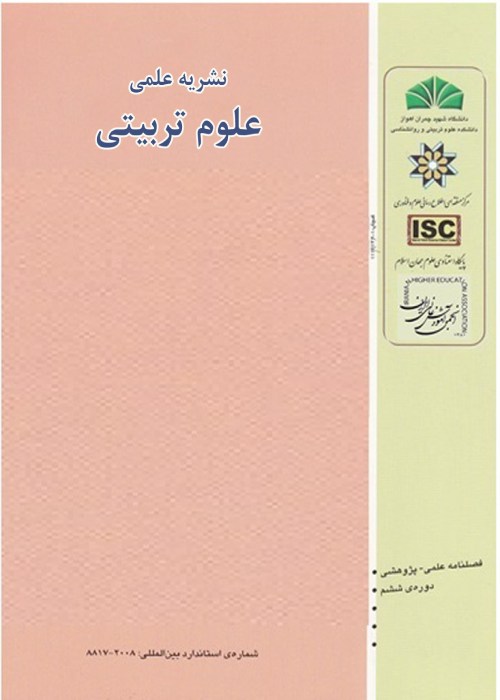A study to compare learning and motivation of continuing medical education in the medical university of Kermanshah using the traditional instruction, instruction designed based on Merrills, Reigeluth's models and Merrills, Reigeluth's & Keller's models
Author(s):
Abstract:
The purpose of this study was to identify an appropriate Instructional method for Continuing Medical Education using traditional (lecture based) and two Electronic learning methods. In this quasi-experimental study 90 General physicians and assistants according to the recall of Kermanshah University and by available sampling method in three groups including 30 people participated. The traditional continuing medical education attended in the classroom received lecture based teaching and was taught by experienced college teachers. The E-learning content in the second group was developed by using Microsoft PowerPoint 2010 software with both text and image media and in the third group by using Adobe Flash CS5 software with all five media (text, images, sound, animation and video). It should be noted that the three groups had similar content in terms of text. The gathering instrument was four questionnaires, included of demographic information (8- items). The rate of learning by comparing pre- test and post-test scores (20- items were written at application level by using the Merrills taxonomy) and two questionnaires measuring motivation in learning based on the traditional and e-learning methods (48- items). Data analysis was performed by paired sample T test and chi square, One-way analysis of variance, Kruskal-Wallis and Tukeys test. The findings showed that there were no significant differences between groups in the average scores achieved in the pre-test exam in three groups (p˂0/05). The results of One-way ANOVA test in the post-test exam showed that the learning rate was not statistically different between Group I and Group II and the third group had the highest rate of increase in learning than the other groups that was statistically significant (p=0.001). Also, participants motivation in group II was more than group I and participants using Merrills, Reigeluths & Kellers models were more motivated than with the other two methods (p=0.001).
Conclusion
As a result, educational method based on instructional and motivational models, in terms of learning and motivation rate to teach physicians, was more effective than traditional teaching methods and merely instructional design models. Keywords:
Language:
Persian
Published:
Education Journal, Volume:20 Issue: 1, 2013
Pages:
117 to 136
magiran.com/p1706457
دانلود و مطالعه متن این مقاله با یکی از روشهای زیر امکان پذیر است:
اشتراک شخصی
با عضویت و پرداخت آنلاین حق اشتراک یکساله به مبلغ 1,390,000ريال میتوانید 70 عنوان مطلب دانلود کنید!
اشتراک سازمانی
به کتابخانه دانشگاه یا محل کار خود پیشنهاد کنید تا اشتراک سازمانی این پایگاه را برای دسترسی نامحدود همه کاربران به متن مطالب تهیه نمایند!
توجه!
- حق عضویت دریافتی صرف حمایت از نشریات عضو و نگهداری، تکمیل و توسعه مگیران میشود.
- پرداخت حق اشتراک و دانلود مقالات اجازه بازنشر آن در سایر رسانههای چاپی و دیجیتال را به کاربر نمیدهد.
In order to view content subscription is required
Personal subscription
Subscribe magiran.com for 70 € euros via PayPal and download 70 articles during a year.
Organization subscription
Please contact us to subscribe your university or library for unlimited access!


